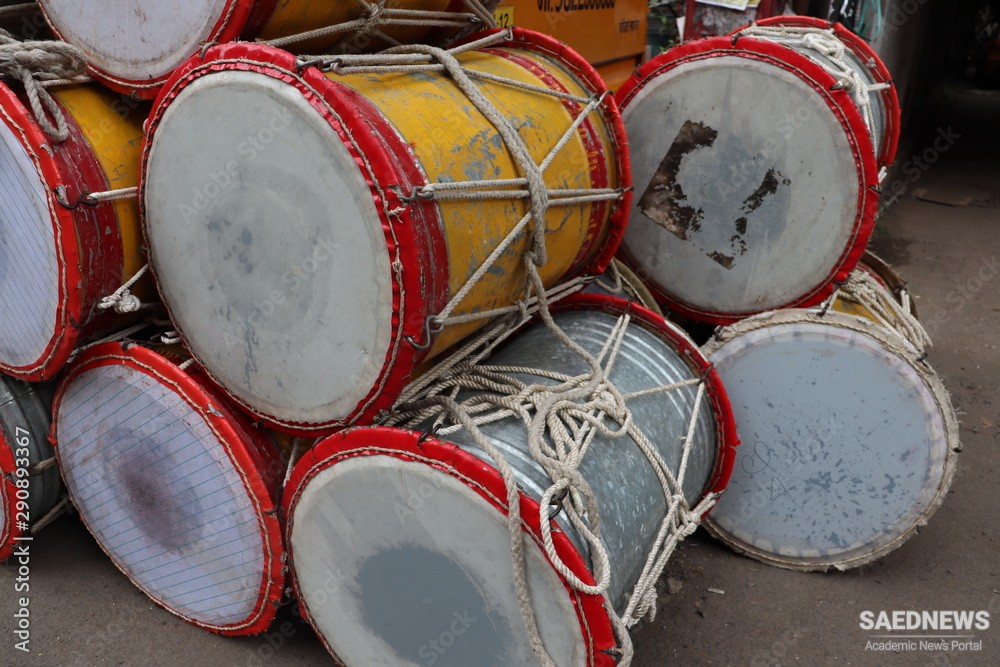This drum is struck either with the hand or with one or two sticks. The position in which it is held varies. Sometimes it is horizontally suspended from the neck. On the same relief referred to in the preceding paragraph, members of the band carry the drums from the shoulder so that they hang diagonally across the man’s chest and are struck on the same head with two sticks. A third position, in a women’s dance, may be axillary; but as the player is carved in profile, the shape and the position of the drum are not distinct enough to be conclusive.
On some reliefs at Bharahat, the drum stick is hooked or coiled in the form of a bishop’s crosier instead of being straight. Such sticks, possibly connected with forerunners of a Chinese symbol, the mace of fortune, still exist in Tibet, South India, Sumatra and Borneo, while they have disappeared from Europe, northern India and Persia. It probably was Persia that gave India the hooked stick and the cylindrical drum with X-laces as well; drums of this kind with crosier sticks are not found anywhere except on medieval Persian miniatures. In the third century B.C. the provinces of the northwest were under Persian rule and accepted a quantity of Persian words and Persian customs. Two such drums are sometimes placed together, one standing and one lying, to form a pair, at Bharahat as well as on later reliefs up to the fourth century A.D. One of the drums is horizontally laid on the thighs of a sitting woman, and the other drum stands erect before her; both are played with bare hands.
Twin drums of a similar shape, but separately played by two standing men, appear on a relief of the temple at Sanchi in Central India (first century A.D.). Twin combinations of this kind exist far beyond the boundaries of India. Children in modern Bali have preserved exactly the same custom, and the Koreans suspend two cylindrical nailed drums from an upright frame so that they hang horizontally at right angles one above the other; as small clapper drums placed crisscross on a handle, they still are used in Japan.
A different kind of drum is played in a martial scene at Bharahat, where apes are the performers. One sees a large drum supported against the player’s chest, his left arm is bent around the trunk of the drum and his right hand is striking with a stick. The author is inclined to conclude from this position and the analogy with ancient Peruvian representations that this drum is ‘shallow’—that is, an intermediate form between a barrel and a frame drum. Small dots around the skin are probably not nails as one might suppose; the sculptor’s style is too realistic to admit such a misplacement. They are more likely to be dabs of sacrificial paste, mixed from pills and vegetables. Later on, such pastes used on the skins of drums lost their symbolic character and became a device for tuning the skin by increasing the weight.
One of the Bharahat reliefs shows an ape playing the oldest hourglass drum—a waisted drum narrower in the middle than at the ends. It is not much longer than it is wide, and the skins are laced with nearly parallel thongs or cords and a central belt around the narrow waist. Suspended from the ape’s shoulder, the drum is played with two sticks, each striking one skin. Modern Indian hourglass drums are generally shorter and smaller. They have the central belt but the thongs are laced in W form. When played, they are held in the hand so that by pressing the lacing cords the man is able to alter the pitch. An apparently older type, called davan


 Trumpets: Their Origins and Background
Trumpets: Their Origins and Background














































